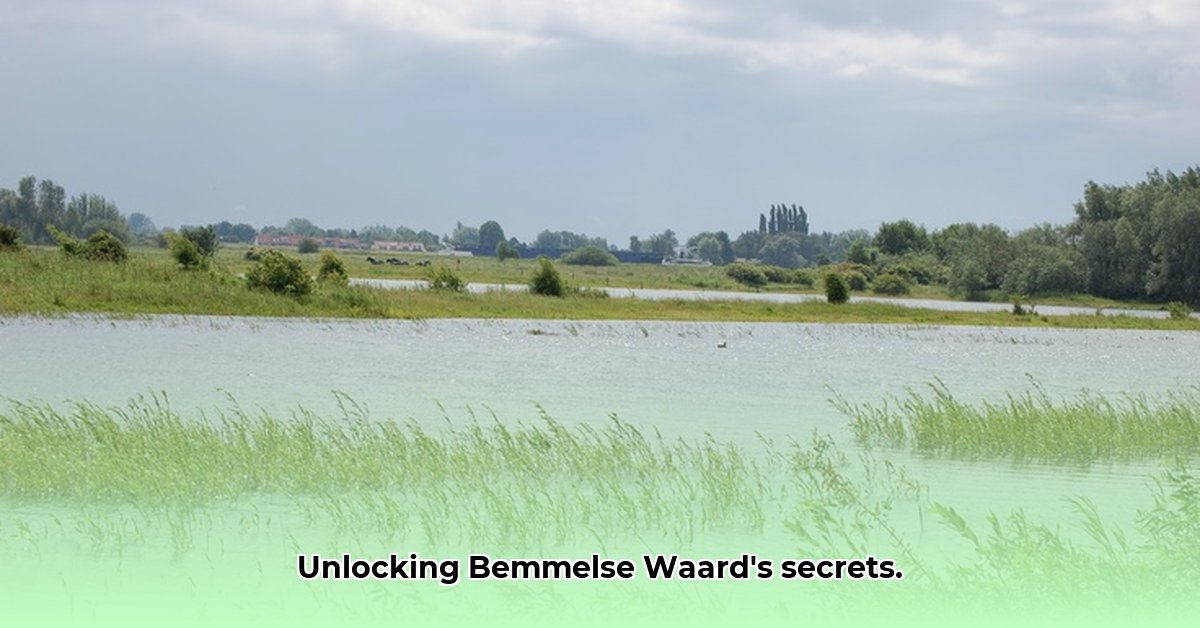
A Natura 2000 Jewel in the Dutch Crown
The Bemmelse Waard, a Natura 2000 site nestled in the Netherlands, is a testament to the remarkable biodiversity of the region. This nature reserve, a haven for a wide array of flora and fauna, showcases the successful interplay between conservation efforts and the needs of local communities. It's a place where the delicate balance between human activity and nature's flourishing is constantly being refined and improved. But maintaining this balance presents challenges, most notably the ever-present threat of invasive species.
A Biodiversity Hotspot: Rare Treasures and Familiar Faces
Bemmelse Waard teems with life. Picture sun-drenched meadows alive with the buzzing of insects, where rare wildflowers like Clinopodium acinos, Potentilla norvegica, and Aristolochia clematitis (a type of birthwort) paint vibrant splashes of colour. The air hums with the songs of bluethroats and Cetti's warblers, while black terns perform their graceful aerial ballets above the water. Even the industrious beavers contribute to the reserve's dynamic ecosystem, shaping the landscape with their remarkable dams. Isn't it amazing how many different creatures call this place home?
Challenges & Threats: Invasive Species and the Fight for Balance
However, this idyllic scene faces a formidable foe: invasive alien species. These unwelcome intruders, plants and animals not native to the area, disrupt the delicate ecosystem balance. They outcompete native plants for resources, altering habitats and potentially pushing some native species towards extinction. This is a significant concern, as understanding the full extent of their impact and developing effective control strategies remains a key challenge. Current research is actively exploring solutions, but dealing with these invasive species requires a persistent and adaptive approach. How can we best protect the Bemmelse Waard's unique biodiversity from these unwelcome guests?
Conservation Successes: A Story of Collaboration and Triumph
Despite these challenges, the Bemmelse Waard boasts significant conservation achievements. The expansion of the reserve has not only created more vital habitat for wildlife but has also improved flood mitigation for neighbouring communities—a clear demonstration of the symbiotic relationship between nature conservation and community wellbeing. The dedicated work in restoring habitats, particularly for wading birds, showcases decisive action and visionary leadership. This collaborative effort, involving Staatsbosbeheer, Lingewaard Natuurlijk, local residents, and government bodies like K3Delta, illustrates the power of collective action in achieving conservation goals.
Future Management Strategies: A Roadmap for Continued Success
The future of Bemmelse Waard relies on a comprehensive, adaptive management plan. This involves ongoing monitoring, flexible strategies, and continued collaboration among all stakeholders. This forward-thinking plan outlines key actions for the coming years:
Enhanced Invasive Species Monitoring: Staatsbosbeheer will implement improved monitoring, alongside a review of current grazing practices (0-1 year), aiming for an adaptive management plan informed by ongoing data and potentially incorporating community science initiatives (3-5 years).
Habitat Restoration & Public Awareness: Lingewaard Natuurlijk will continue habitat restoration in Ambtswaard (0-1 year), while simultaneously raising public awareness of the reserve’s ecological importance (0-1 year), and developing partnerships with local schools to foster community stewardship (3-5 years).
Sustainable Tourism & Community Engagement: Local residents and visitors will be encouraged towards responsible recreation and educated about invasive species (0-1 year). The long-term goal is to develop sustainable tourism supporting conservation, accompanied by improved access and signage (3-5 years).
Flood Risk Mitigation & Research: K3Delta and government bodies will continue integrating flood risk mitigation with conservation efforts (0-1 year). A key long-term focus will be on further research into the complex interplay between beaver activity, climate change, and the overall ecosystem health (3-5 years).
Conclusion: A Shared Responsibility for the Future
The Bemmelse Waard's success depends on ongoing monitoring, adaptive management, and unwavering collaboration. Further research into invasive species control and public engagement is vital. This remarkable nature reserve serves as a powerful reminder that protecting biodiversity is a shared responsibility, requiring the concerted efforts of scientists, local communities, and policymakers. The future of this precious ecosystem is in our hands. Let's all play our part.